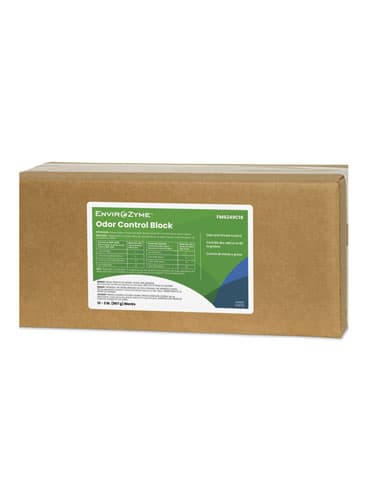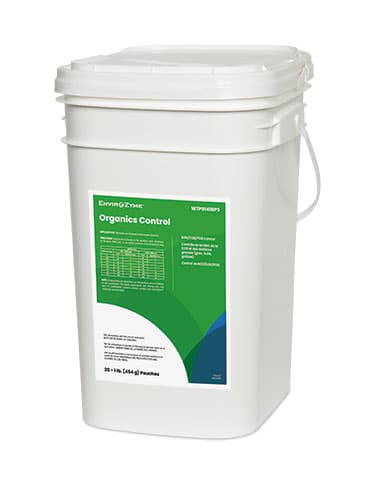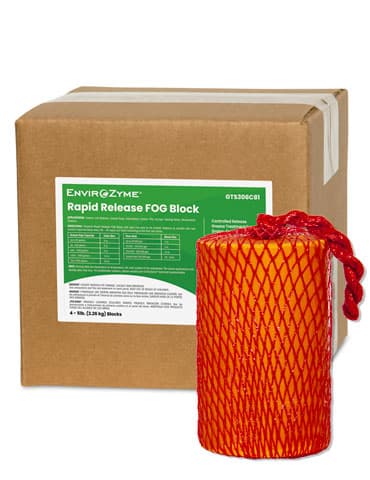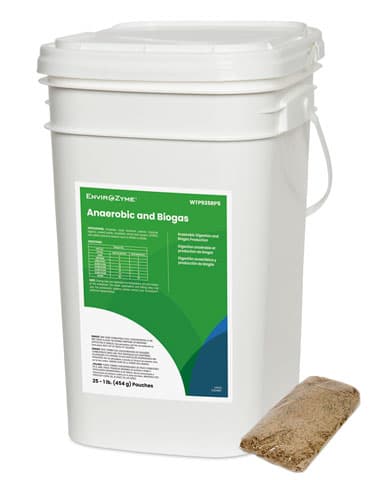Featured Products

Odor Control

Odor Control Block

Organics Control

Rapid Release FOG Block


328.4 million tons of meat are consumed across the globe every year, creating an excess of animal remains. Animal rendering plants process animal remains sourced from slaughterhouses or farms and ranches. To sustain increasing levels of mass meat consumption, animal rendering plants will need to continue functioning at high capacities. Each pound of processed byproducts creates approximately one gallon of wastewater, usually sourced from carcass cleaning, drainage, and wet transport. As a result, plants generate a large amount of wastewater and excess organic compounds. Read on for more information regarding the rendering process and how sustainable solutions can be introduced for effective management throughout every step of waste treatment.
A rendering plant utilizes discarded animal carcasses to harvest mass amounts of byproducts. Plants receive raw material and begin transforming animal tissue into usable materials for various applications. Accepted carcasses are minimized into a smaller mass and placed into pressurized tanks. Tank contents are “cooked” at high temperatures, halting biological processes and killing remaining harmful bacteria.
Excess moisture is released from carcasses during this initial cooking stage. Pressure tanks are perforated at the bottom to drain fluids from material, with screens to prevent solids from entering the wastewater. Such practices streamline future wastewater treatment processes.

Once thoroughly cooked, contents of the pressurized tank are separated into two main categories: edible or inedible. Depending on the methods used in each plant, proteins reaped from the minimizing process will be sorted for human or animal consumption. Following initial pressurization treatment, proteins may be pressed into powders or cakes. At this point, raw material unable to be further processed is safe for disposal in a landfill.
Only 32% of a fresh carcass is dry processable matter, meaning the remaining 78% is composed of wet compounds that are drained and collected during the initial cooking stage. Due to the high count of organic compounds, this wastewater presents specific challenges for proper disposal. Rendering plants generate wastewater from multiple other sources as well: plant sanitation, hide operations, wet material transport, cooling water, blood processing, and more.
Due to the nature of its use, wastewater generated by rendering plants is extremely rich in natural substances like nitrogen, phosphorus, and potassium. Waste treatment methods must be thorough and precise in removing biological compounds.
"If wastewater from a rendering plant is not properly treated to remove organic substances, it can have a devastating effect on local ecosystems downstream."
Increased amounts of these nutrients in natural water sources and soil is extremely detrimental.
Proper treatment and filtration of wastewater prevents these nutrients from harming downstream ecosystems. There are two main steps when treating wastewater: primary pretreatment and secondary treatment. Primary pretreatment utilizes sand and large rotational drums to trap and removes large solids from wastewater. During this stage, plants may utilize dissolved air flotation methods, oil and grease separators, anaerobic treatments, and aggressive chemicals to expedite the removal of solids and grease.
Once pretreatment removes excess solids from wastewater, secondary treatment methods harness biological processes to remove lingering organic contaminants. Anaerobic and aerobic treatment are most often used in rendering plants for the final stage of wastewater treatment. Water is piped into biodegradation tanks containing a high concentration of microorganisms, speeding up the natural cleansing process and removing remaining organic matter. Plants often utilize biological nutrient removal (BNR) systems before wastewater enters the second stage of treatment, allowing for a more thorough waste removal process.

Processing raw materials creates a specific set of environmental concerns, and EnviroZyme recommends microbial products to naturally mitigate concerns and aid treatment processes.
Odor is a consistent challenge for rendering plants within the facility and surrounding outdoor area. EnviroZyme’s highly concentrated Odor Control liquid contains a blend of bacteria developed specifically for breaking down strong, offensive odors within holding tanks, drain lines, grease traps, waste streams, and sewers. Odor Control features various dilution recommendations for specific applications, but it also can be poured or metered directly into drain pipes and lines for maximum odor control. This product is also available in a concentrated solid form and can be inserted in similar applications for extended release and dedicated break down of deposits.
Rendering plants generate a fair amount of fats, oils, and greases (FOGs) for disposal, and their wastewater – if not properly treated before released downstream – contains a significant amount of FOGs. High amounts of these substances in water sources directly harms water quality and environmental health. EnviroZyme offers water-soluble packets and FOG blocks containing microorganisms that work to consume remaining organic material lurking in rendering plants’ wastewater, preventing pollution and aiding natural removal processes. These packets can be placed within holding tanks and aeration basins or added at any point downstream of the rendering plant to maintain healthy water quality.
Maintaining efficient microorganisms within anaerobic treatment systems can be a challenge. EnviroZyme’s formulas optimize anaerobic processes in the treatment tanks. Regular use of these water-soluble packets can increase biogas yields by 20-50% depending on existing substrates within anaerobic tanks. The packets increase treatment efficiency and biogas production, helping rendering plants maintain cost effective solutions.
To learn more about our services or connect with an EnviroZyme representative, please fill out the form below.




